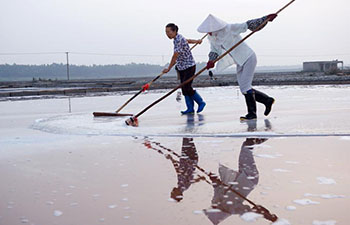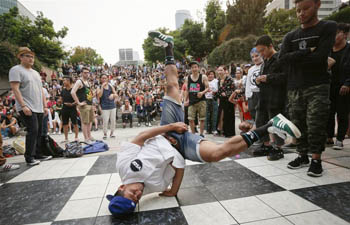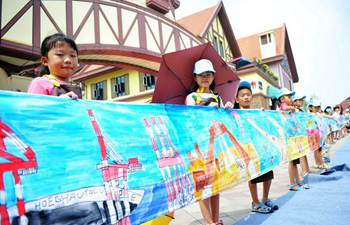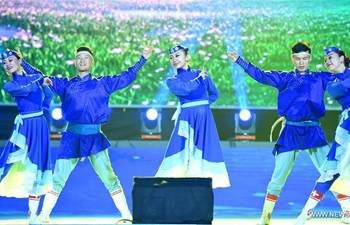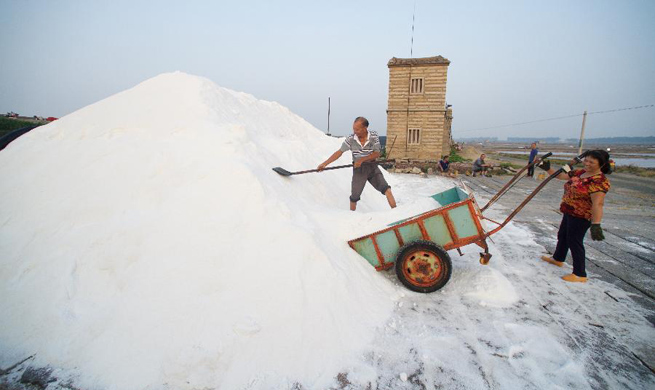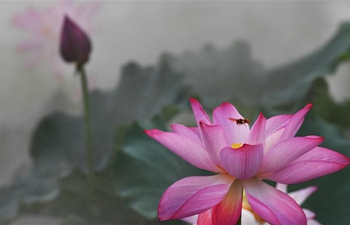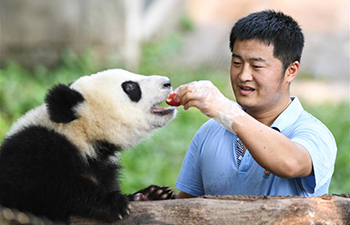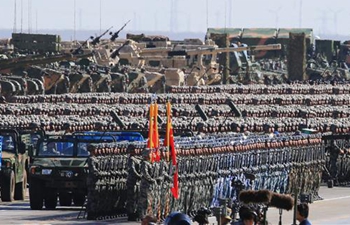By Xinhua writers Lou Chen, Li Renhu, Zhang Lina
HOHHOT, Aug. 6 (Xinhua) -- Over half a century ago, Huang Zhigang was a starving orphan in Shanghai. Along with 3,000 other orphans, he only was saved when he was taken to Inner Mongolia.
It is not customary for Mongolians to have a tombstone, but Huang, his brothers and sisters set one up for their foster parents Dowge and Zhang Fengxian in the Xianghuang Banner of Inner Mongolia Autonomous Region.
Every year in July, Huang, who has retired from his government post, and his wife visit the tombstone to honor their late parents, bringing peaches, liquor and flowers.
"If it were not for my parents, I would have died of starvation during the three years of difficulties," said Huang, kowtowing before the monument.
From 1959 to 1961, natural disasters and famine claimed staggering death tolls in China. In Shanghai, orphanages were crowded and welfare institutions could not feed the huge numbers of children.
Zhou Enlai, then Chinese Premier, met with Ulanhu, secretary of Communist Party of China Inner Mongolia Committee and decided to send the children to the grasslands where there was enough milk and meat to feed them.
From 1959, over 3,000 orphans from Anhui, Jiangsu, Shanghai and Zhejiang were put on trains and taken 1,400 kilometers to Inner Mongolia.
"We had no names when we left Shanghai. Each of us had a piece cloth sewn on to our clothes with a number on it," said Huang Zhigang, who was five when he was brought to Xianghuang Banner.
The birth rate in Inner Mongolia was low in the 1960s. Many ethnic Mongolian couples wanted to adopt children, said Yun Shubi, daughter of Ulanhu, who also took part in the mass salvation plan.
"My father said, herdsmen like children, no matter where they come from," Yun told Xinhua, ahead of the 70th anniversary of the autonomous region. Ulanhu promised Zhou that he would make arrangements for the mass transfer.
In general, the government allowed each a couple to take only one child. Many newly-weds and even old grannies rode or walked hundreds of miles to apply to adopt, she said.
Some children in the poorest of health were put in clinics before being adopted, Yun said.
THE RED-FACED AUNT
In 1961, Zhang Fengxian was a nurse at a commune in Xianghuang Banner. Six orphans from Shanghai, including Huang Zhigang, were staying at a school next door.
"We were all about the same age, four, or five at the time. We called each other sisters and brothers, and we refused to be separated. When our prospective parents came, we hid so they couldn't find us," said Huang.
Zhang liked the children. "She wore khaki clothes, seemed plain and nice. She came from next door to see us, helped us wash our faces and hair. Sometimes she brought candy. We grew to like her," said Huang.
The children called Zhang the "red-faced aunt" - her face was tanned due to exposure to the sun. The four boys and two girls stayed at the school for months, but when winter came they needed to be put in private homes with stoves.
Zhang had no children of her own, and when she offered to adopt all six kids together, the local government agreed because both she and her husband had stable jobs.
Zhang raised them with her husband Dowge, but she passed away in 1991. One of the sons died while serving in the army. The rest went to university and found decent government jobs.
"Mother gave us different names. She named me after the banner, my given name meant "steely mind." One of my brothers was named Mao, or 'the kitten' because he was frail. The three others had Mongolian names," said Huang.
One of Huang's sisters Gaowa now works in Beijing. His brother Mao Shiyong, who used to be called kitten, works in Shanghai where his son attends college, but the others have stayed in Inner Mongolia.
Mao Shiyong remembers their mother got exceedingly angry once. "We four boys pushed a cow's feed container to the lake. Mom seized us and spanked us. She cried, "The lake is so deep! What if you had drowned? What if you were all drowned?"
"She worried about our safety through all her life. She said we are her children, but we are also a mission for her from the State," Mao said.
THE STATE'S CHILDREN
Though it is hard to track down of all 3,000 children, most of them have survived, Yun Shubi said.
In the 1960s, government made welfare payments to families who had adopted the children. When the country was in extreme shortage of food, the regional government gave 2.5 kilograms of rice for every child. The children received living expenses up until they attended university.
Doguima, 75, a highly venerated woman in Inner Mongolia, is one of the few surviving carers of the orphans. She fostered 28 children, aged up to six years old, before they were taken by their adoptive parents. To this day, Doguima is often visited by the orphans she took care of 50 years ago.
"I knew nothing of being a mother in 1961 at the age of 19 when I received the orphans. I remembered one of the toddlers, Huhe, came and called me Mama. My heart pounded, and my face turned red. I took him into my arms and cuddled him till he slept," said Doguima.
"I looked after the kids until they were strong enough for adoption. They left one after another, but I believe they were in good hands," she said.
When China endured the Cultural Revolution, dedication and an unrelenting sense of responsibility bonded the children and their new parents together, helping them survive the harshest of hardships.
Aogen already had a 6-year-old daughter when she adopted Chakto, who was three when he was taken to Xilingol in the winter of 1960. The boy suffered from polio.
The year 1969 was the hardest of all for Aogen. During the day, she was made to do heavy chores and carried stones to build a water sluice. At night, she was scolded and abused by class struggle leaders, said Narilato, a local official who was close to their family. Both Aogen and Chakto have since passed away.
"One day, Aogen could not bear it and she took a knife and walked out of the yurt. She fainted before she could attempt suicide. When she woke up, Chakto was trying to break the knife with a rock. She realized then that she could never let go of her own life, or the boy," said Narilato.
The orphans from south China had no Mongolian lineage, but years of living on the grassland have bonded them with the land and the people.
Tongalaga, a Shanghai orphan in her 60s, runs a shop making Mongolian robes. "My mother wanted me to learn Mandarin. She said one day I may want to go back to Shanghai and look for my birth parents. I said there is no meaning in doing so. I learnt Mongolian, and will stay forever on the prairie," she said.
Shanghai orphan Danlaga grew up and worked as a township-level government employee. He married a Mongolian wife, and carried on his foster parents credo of good deeds. He took care of an aged neighbor for ten years before the woman passed away.
In 2002, ten of the orphans returned to the Shanghai city orphanage. "The train to Inner Mongolia 56 years ago changed the fate for thousands of us, but only for the better," said Chagan Chaolu, one of the orphans.
They threw the salt from Inner Mongolia to the Huangpu River and took back bottled water from Shanghai to their home.
"We will never forget how we left Shanghai, and we will never forget the people and the land which brought us up to be who we are today," Huang said.
(Additional reporting by Ren Junchuan, Wang Chunyan)




